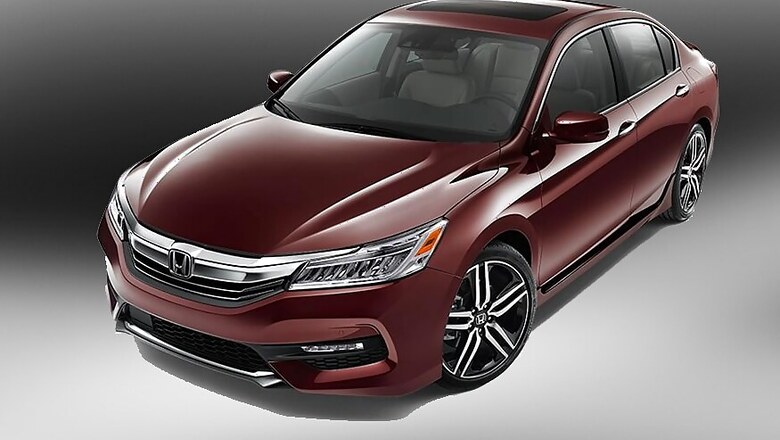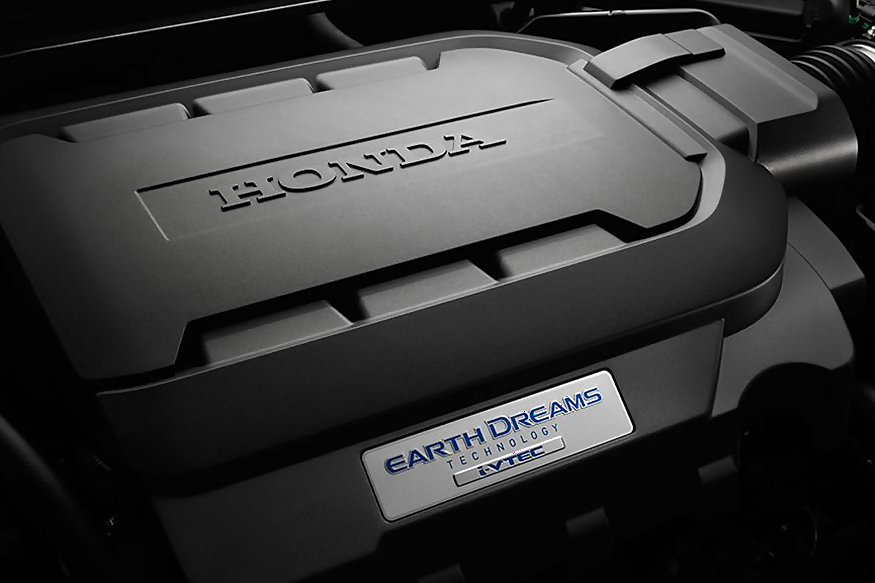
views
Honda Cars India showcased the 9th generation Accord during the 2016 Delhi Auto Expo and is set to launch it in India soon. The car has generated much excitement in the market because it is a popular model which was discontinued in 2013 due to decreasing demands. But, the model is back and the biggest attraction for the car this time, apart from the very NSX-y headlamps, is the hybrid technology that allows the car to give exceptional fuel economy.
What is it exactly?
The Accord is powered by a 2.0-litre Atkinson Cycle DOHC i-VTEC engine that uses Honda’s ‘Earth Dream Technology’. This technology is currently used in three engine options worldwide, which are – i-DCD (intelligent Dual-Clutch Drive), SH-AWD (Super Handling All-Wheel Drive), and the one that’s used in the accord – i-MMD (intelligent Multi-Mode Drive).
Before we get into technicalities, there is one important difference that you should know. There are two types of hybrid systems used majorly around the world – parallel hybrids and serial hybrids.
In parallel hybrids, the gasoline engine and the electric motor works in tandem with each other and provide power to the wheels mechanically, which in a way, is a direct transfer of power to the wheels. A popular example of this would be the Toyota Prius and the Ford Fusion.
When it comes to serial hybrids, though, then the Honda Accord is the popular example.
What are the components that create the ‘fuel economy’ magic?
The Honda Accord’s engine has been purposely built to support the ‘Earth Dream Technology’, whose main components would be the engine itself, a two-motor hybrid system with the lock-up clutch, a lithium-ion battery and the PCU (power control unit).
What are its advantages?
Other than the fuel economy, the driver has a choice of three driving modes which vary the amount of power delivered to the wheels for different driving scenarios, namely – EV Drive, Hybrid Drive and Engine drive mode.

How do they work?
Let’s have a look at the working of the system in all these drive modes.
EV Drive Mode – In this mode, the engine is ‘shut-off’ or disengaged from the drivetrain and all the work is done by the electric drive motor, which derives power from the battery for high torque delivery, meaning quicker acceleration. The same motor develops electricity from the kinetic energy produced during deceleration or braking from the electric servo brake to charge the battery.
Hybrid Drive Mode – In this mode, the engine is no longer ‘shut off’ from the drivetrain and works together with the battery powered system to deliver peak torque and power.
Engine Drive Mode – As the name suggests, all the work is done by the engine in this mode. The lock-up clutch is engaged to deliver torque from the gasoline engine directly to the drivetrain. Ideal for cruising at highway speeds.
Is there more to this than just the motors?
Yes. The motors are doing a lot of work to deliver the power, but that power ultimately reaches the wheels through the transmission. To avoid a jerky experience, Honda mates the whole system to a –E-CVT transmission so that everything works smoothly.
So there you go, next time when someone talks about the ‘different kind of hybrid system’ used in the Accord, you’ll know exactly what it does and how it works.
Honda’s first hybrid car – the Insight, was launched way back in 1999 and the technology used by the Japanese automaker has surely come a long way. The 9th generation Accord goes on to show Honda has been working continuously to improve the hybrid technology implemented into cars.
It all sounds good on paper, but how will the new Accord fare when it’s unleashed onto the Indian roads? We will have to wait and find out.
Also Read: Honda BR-V CVT Review: A Big Car Meant for the Big Indian Family




















Comments
0 comment